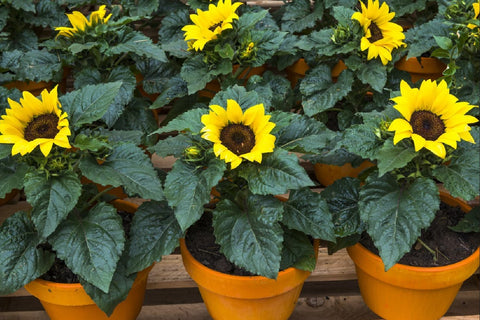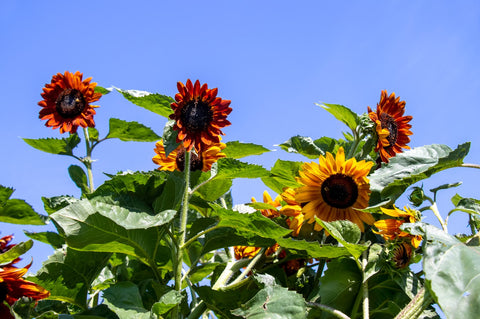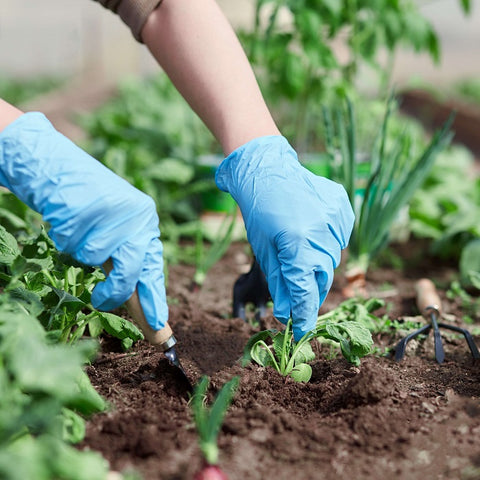Sunflowers are one of the most beautiful and symbolic flowers of summer, providing the perfect backdrop for memorable family moments and stunning bouquet arrangements.The following content also has some reference value for raised garden beds.
This is why many people often look to extend the blooming season of their sunflowers through the art of deadheading.

With this in mind, our guide will take a look at the most effective method of deadheading a sunflower, as well as the best time to do so, and a number of the associated benefits. What’s more, we’ll also look to answer a few of the frequently asked questions.
How To Deadhead A Sunflower
The process of deadheading a sunflower is a relatively straightforward one. Just make sure you protect your hands with a sturdy pair of gloves as you’ll need to use a sharp pruning tool to effectively remove the spent blooms.
- The first thing you need to do is take a closer look at the stem of the sunflower so you can leave as many leaf nodes intact as possible. This is because it’s these leaf nodes where the new growth will come from.
- Next, you need to get some pruners or a snipping tool and cut the peduncle roughly half an inch above the new leaves. The peduncle is where the stem leads to the head of the sunflower.
- Once you’ve successfully completed steps one and two, make sure you remove and discard the sunflower deadhead.
It’s worth keeping in mind the new blooms which come through after the deadheading process might be a little smaller than the original blooms. Nevertheless, there’s every chance you’ll enjoy a gorgeous sunflower, prolific seeds, and if you’re super lucky – a combination of both.
When To Deadhead A Sunflower
If you want to keep your sunflowers blooming, the best time to deadhead them is when the flower fades. Cutting the head off a sunflower before the seeds mature not only allows the plant to continue producing flowers, it also cleans up the garden and prevents unwanted “volunteers” from growing.
Some of the best signs to look out for when deciding to deadhead a sunflower include:
- When the bloom has faded and looks spent
- When the head of the sunflower is sagging over heavily
- When the head of the sunflower has lost most of its petals
- When the vibrance of the flower has gone and a dull head remains
- When the sunflower is no longer attractive or appealing in your garden
The time to expect deadheading sunflowers all depends on the time of year you initially start your sunflowers from a seed or small plant. Most people typically deadhead their sunflowers in late summer or early fall.
Benefits Of Deadheading A Sunflower
There are a number of impressive benefits for deadheading sunflowers that are worth keeping in mind. Listed below are five of the most prominent.
- Extends the duration of the growing season for your sunflowers
- Encourages a greater amount of sunflowers to grow
- Getting rid of spent blooms allows the energy of the plant to go to other sunflowers instead
- Makes your garden look neater and more pleasing to the eye
- Deters squirrels and birds from foraging for seeds

What If An Animal Eats My Sunflowers?
If an animal such as a groundhog or rabbit eats the top of your sunflowers, there’s every chance that some of the healthy leaves will remain undamaged on the stem. If this is the case, two new sunflower blooms can grow from a single stem.
Should You Pinch Sunflowers?
This all depends on why you’re growing sunflowers in the first place. If you’re growing them for a competition and want to maximize their height, it’s a good idea to avoid pinching the growing tip.
However, if you’re growing sunflowers in your garden with a view to picking them on a regular basis, pinching out the growing tip is an effective way to stunt the plant – making it produce a greater amount of flowers.
Why Does My Sunflower Have Multiple Heads?
One of the most common reasons for a sunflower producing multiple heads is herbicide drift or the presence of chemical residue in the soil. For example, herbicides might drift over from other parts of your garden (or even the garden next door).
Not only can this result in the development of multiple heads, it can also cause abnormal blending, reduced growth, and a twisting of stems or leaf petioles.
Is It Important To Deadhead Teddy Bear Sunflowers?
This type of sunflower typically produces showy flowers with well-textured blooms – the perfect addition to any summer landscape. Teddy bear sunflowers often grow several blooms to a stalk, so it’s essential that you deadhead them if you want to extend the plant’s blooming season.

The Bottom Line
To conclude, deadheading sunflowers is an incredibly simple and rewarding process. Not only is it great for extending the blooming season of the plant, it’s also important for keeping your garden in a neat and tidy condition.









